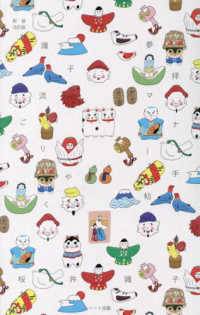Full Description
The book's 75 lessons and reproducible activities touch on all areas of science and provide the key to a world of science magic and mystery. While kids will have fun doing the activities and learning to love science, they are also being encouraged to develop other skills, including reading, writing, math, and art.
The book is designed to help young students catch the "science bug" and find the answers for themselves to these and other questions:
Why do cats have whiskers?
How does a caterpillar change into a butterfly?
Why do elephants have such large ears?
How does a grasshopper grow?
Why is the skin on my elbows so wrinkled?
Why does food taste different when I have a cold?
How can we make perfume from flower petals?
Why does my shadow change during the day?
Contents
Acknowledgments vii
From the Author 1
Guidelines for Using Science Activities and Investigations Successfully in the Classroom 3
I. Investigating 7
1. The Scientific Method 9
2. Cause and Effect 28
II. Observing 37
3. Sight 39
4. Hearing 50
5. Smell 61
6. Taste 67
7. Touch 76
III. Communication 89
8. Model 91
9. Data 100
IV. Making and Using Definitions 111
10. New Words 113
11. Dictionary Skills 122
V. Measuring and Estimating 135
12. Length 137
13. Capacity 146
14. Weight 152
15. Time 158
16. Temperature 165
VI. Grouping 179
17. Classifying 181
18. Sequencing 189
Glossary 195
Index 199








